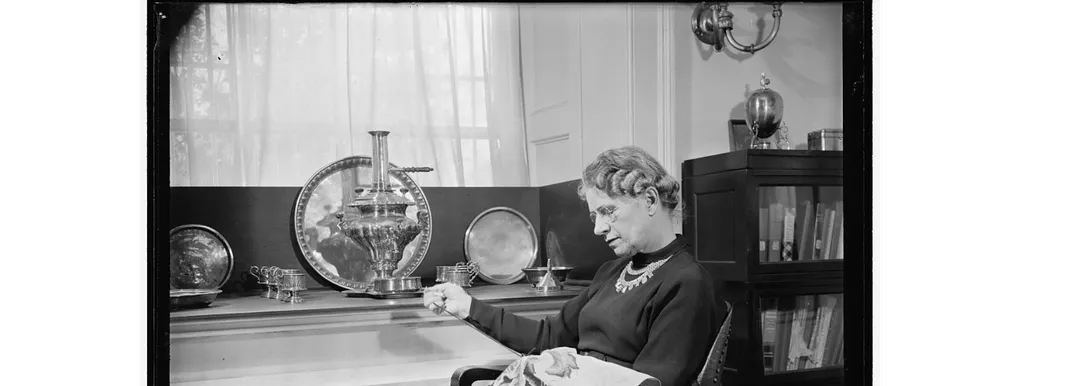How Eleanor Roosevelt and Henrietta Nesbitt Transformed the White House Kitchen
The kitchen was new, but by all accounts it didn’t help the cooking
/https://tf-cmsv2-smithsonianmag-media.s3.amazonaws.com/filer/7e/a9/7ea980d8-54e7-4973-a60a-4cb49a8188bd/kitchen.jpg)
A nightmare full of cockroaches and ants: That’s what First Lady Eleanor Roosevelt and her housekeeper, Henrietta Nesbitt, found on their first inspection of the White House kitchen.
Roosevelt and Nesbitt already had a working relationship when the Roosevelts moved into the White House and she came to be their housekeeper, which probably helped when faced with this domestic horror.
The pair had known each other for a long time in Hyde Park, where the Roosevelts previously lived. Nesbitt described the moment they faced the kitchen in her memoir, White House Diary. It was part of their first mutual tour of the White House, just after the Roosevelts moved in and Eleanor Roosevelt had received a one hour-long tour from her predecessor. Most of the rooms were passable, although Nesbitt remnisced grimly about the many crystal chandeliers to be polished. But then:
Then we reached the kitchen, and I tell you my heart sank. We both stood stock-still and looked all around and then at each other.
I've tried to describe the White House kitchen as it was then. Some newspaper writer did it better than I ever could. "It looks like an old-fashioned German rathskeller, with a great deal of ancient architectural charm."
I can't work up any charm for cockroaches. No matter how you scrub it, old wood isn't clean. This was the "first kitchen in America," and it wasn't even sanitary. Mrs. Roosevelt and I poked around, opening doors and expecting hinges to fall off and things to fly out. It was that sort of place.
The pair agreed: A new kitchen was in order. This kitchen renovation, also known as Public Works Project No. 634, took the summer and fall of 1935. “Engineers from General Electric and Westinghouse worked with White House staff to bring the entire culinary department into the 20th century,” writes Sydnee C. Windston for the National Women’s History Museum.
At the end, Nesbitt wrote that cockroaches and mice were still a problem but at least the kitchen was better. Her book contains a fascinating account of the White House’s many infestations, which ranged from mice, rats and squirrels to “monster” cockroaches and the black ants that “always showed up around cold weather,” she wrote.
But although the kitchen was different, some would say it did absolutely nothing for the White House food.
“Nesbitt, a Hyde Park neighbor of the Roosevelts who had worked with Roosevelt in the local Hyde Park League of Women Voters chapter, had little experience beyond running a home bakery when she accepted the job,” writes the White House Historical Association. Her strong personality and questionable approach to cookery gave the White House kitchen a reputation for turning out some thoroughly indigestible items.

“Mrs Nesbitt turned out meals so gray, so drooping, and so spectacularly inept that they became a Washington legend,” writes Laura Shapiro for The New Yorker. “By all accounts, Mrs. Nesbitt ruled 1600 Pennsylvania Avenue with an iron fist and cooked as she saw fit during troubled times,” writes Stephanie Butler for History.com. “Her menus were notoriously spartan, with a heavy emphasis on liver, salt cod and string beans. The food was so dreary that even the White House Press Corps took notice of it, and gossip items appeared in newspapers about the president refusing yet another dish of mutton.”
Nesbitt briefly worked for President Harry Truman and First Lady Bess Truman, but her cooking and her hands-on approach to domestic management didn’t fit with their palates and she was summarily canned, to the relief of White House guests and probably the private and posthumous satisfaction of President Roosevelt, who had frequently been at odds with Nesbitt’s cooking throughout his term. But Eleanor Roosevelt wasn’t looking for a skilled cook when she hired Nesbitt, writes Shapiro: As food historian Barbara Haber noted, “she just wanted somebody with whom she felt comfortable.”